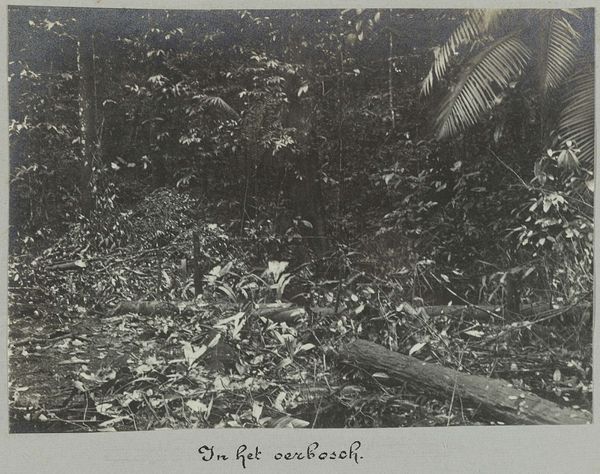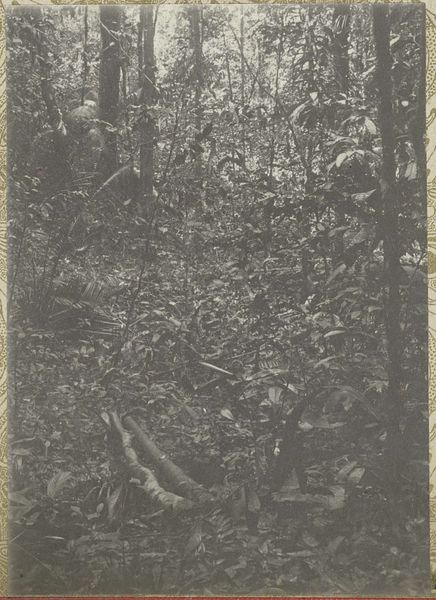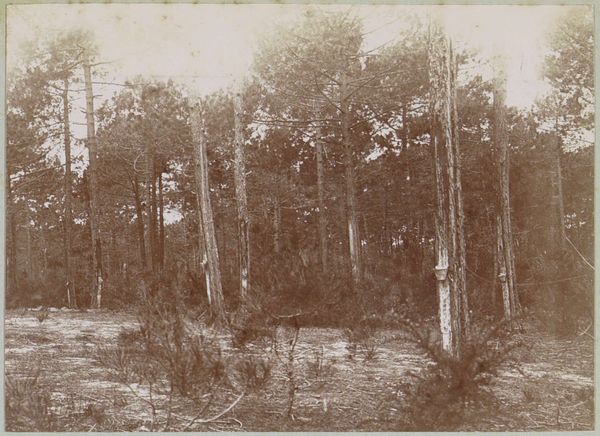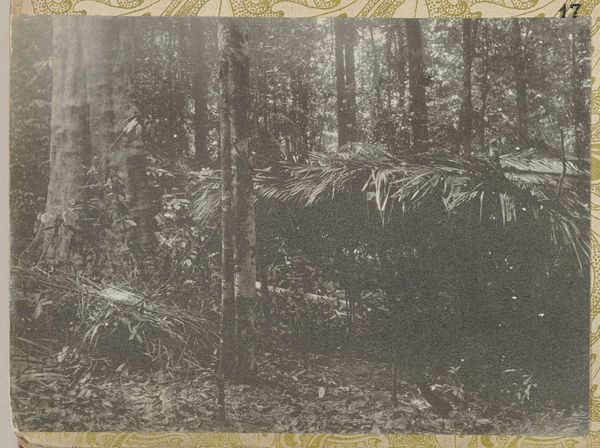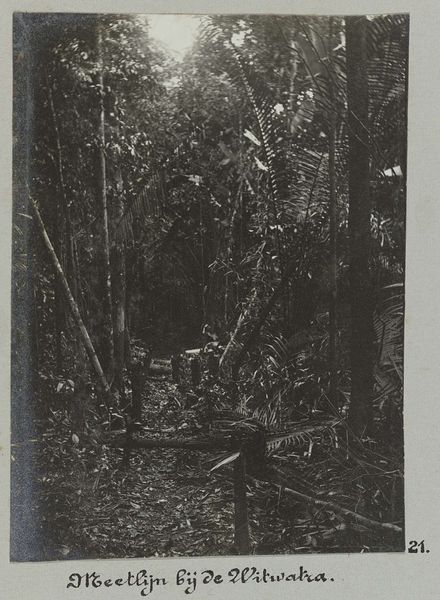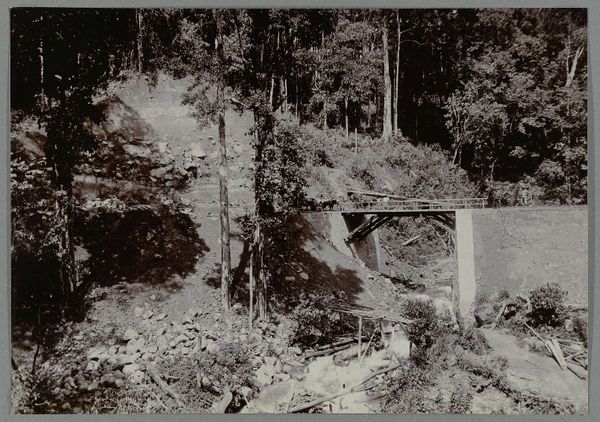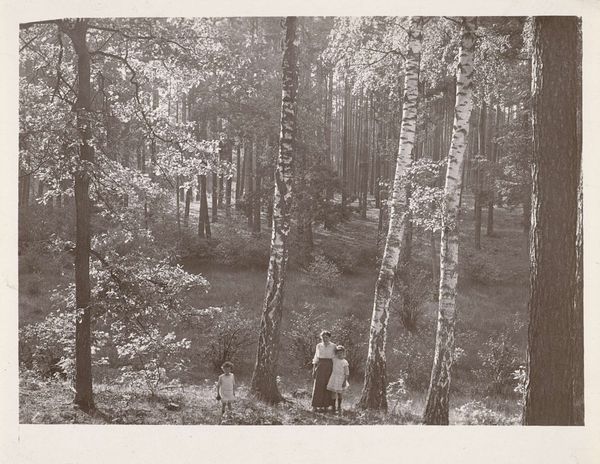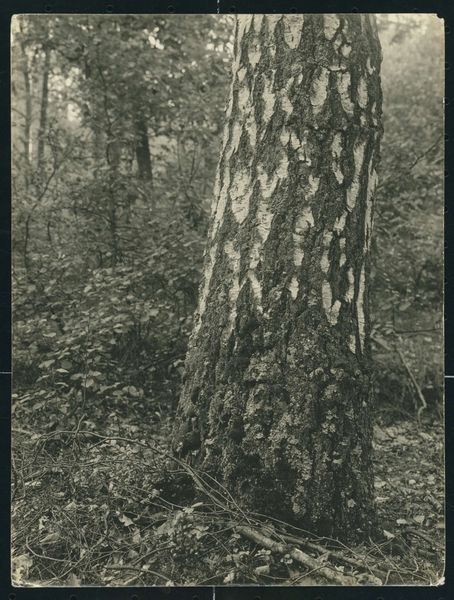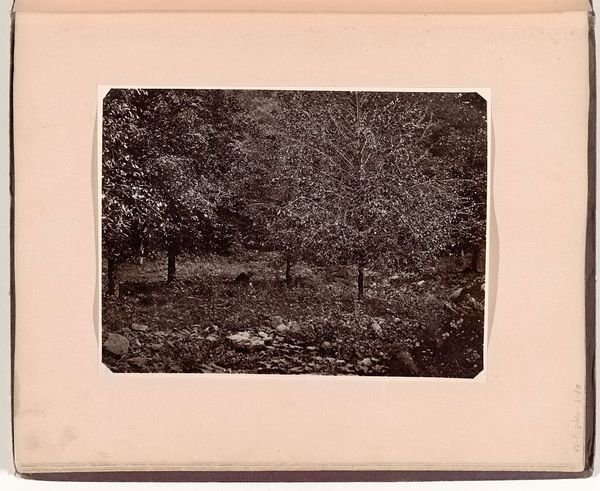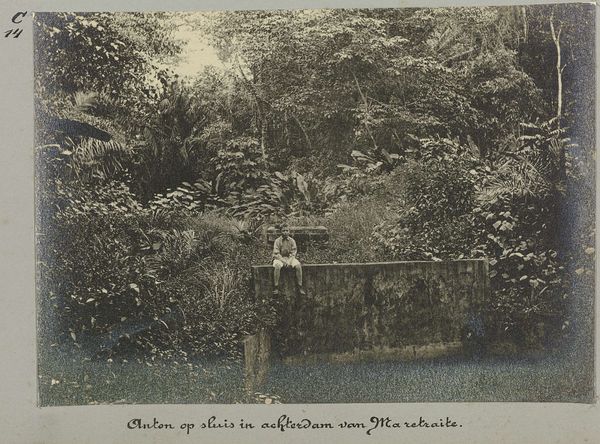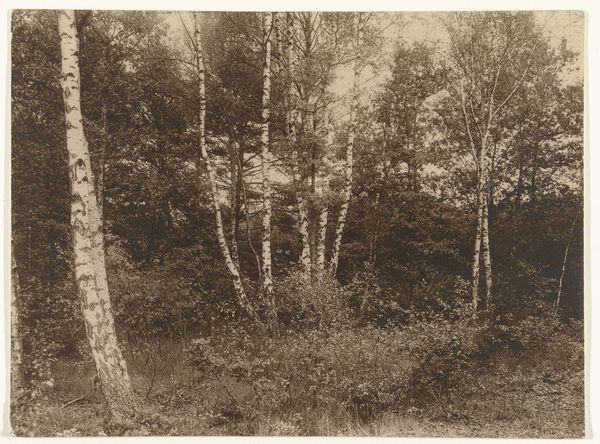
photography, gelatin-silver-print
#
landscape
#
photography
#
orientalism
#
gelatin-silver-print
#
realism
Dimensions: height 80 mm, width 110 mm
Copyright: Rijks Museum: Open Domain
Editor: This is Hendrik Doijer's gelatin-silver print, "Begraafplaats te Berlijn" - "Cemetery in Berlin," made sometime between 1903 and 1910. It feels...overgrown. Almost claustrophobic, with all that dense foliage. What can you tell me about it? Curator: From a materialist perspective, this work operates on multiple levels. The gelatin-silver print itself signifies a specific industrial process, born from the scientific advancements and commercial availability of photographic materials at the turn of the century. The choice of this medium highlights accessibility and reproducibility. Do you notice the contrast between the apparent 'naturalness' of the subject and the technological means of its representation? Editor: I do. The scene is a cemetery overtaken by nature, yet it's captured with a manufactured process. So it is a record but also a creation from that period. What's the relationship? Curator: Exactly! Consider what “Berlin” meant here – likely a reference to a plantation in the Dutch East Indies. How might Doijer, a Western artist, be implicated in the colonial gaze and its exploitation of resources, even within what seems like a benign landscape scene? Notice the traces of material culture left behind – the burial markers. What labor and social structures underpinned this "cemetery," and whose stories are not being told? Editor: I hadn’t considered the colonial context. It reframes the whole piece, making it less about a simple landscape and more about the systems that made that landscape, that cemetery, and even this photograph, possible. Curator: Precisely. The photograph isn’t just a document. It is a product of those material and social relations, and actively reinforces a particular viewpoint. Reflecting on the materiality opens us up to the network of power involved in its creation. Editor: It's amazing how digging into the "how" of this photograph can reveal so much about the "why." Thanks for helping me to examine the historical context here. Curator: It was my pleasure! Understanding art’s means of production invites richer, more critical analysis.
Comments
No comments
Be the first to comment and join the conversation on the ultimate creative platform.
